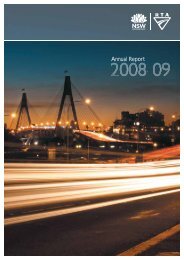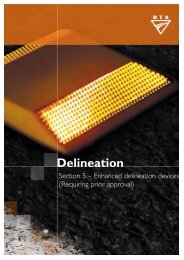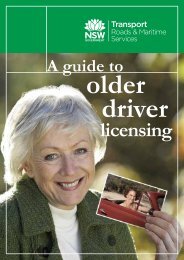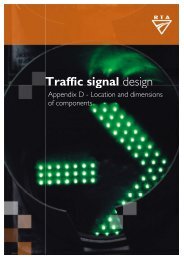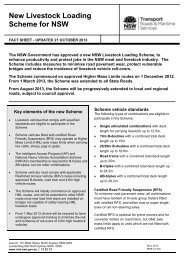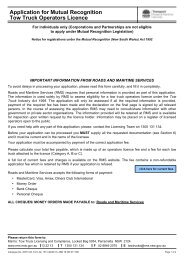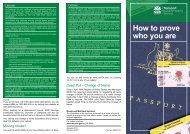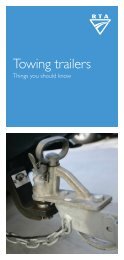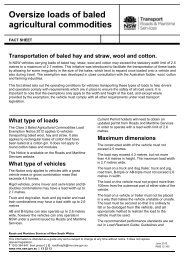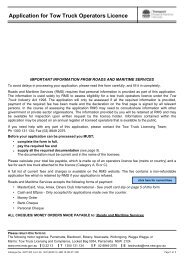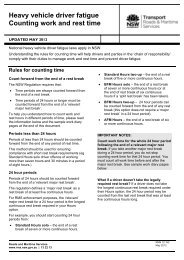Hazard perception handbook - RTA
Hazard perception handbook - RTA
Hazard perception handbook - RTA
Create successful ePaper yourself
Turn your PDF publications into a flip-book with our unique Google optimized e-Paper software.
A hazard <strong>perception</strong> action plan<br />
Through scanning and hazard <strong>perception</strong> you are trying to:<br />
See road hazards (eg pedestrian waiting to cross the road ahead).<br />
Think about what might happen (eg pedestrian might walk in front of your car).<br />
Think about possible solutions (eg slow down, change lanes or increase space<br />
between your car and pedestrian, sound horn).<br />
Do something to remain safe (eg slow down and give the pedestrian more space).<br />
This hazard <strong>perception</strong> process can be summarised as:<br />
• See<br />
• Think<br />
• Do<br />
Scanning is the ‘see’ part of the process. Understanding that these three steps are<br />
the basis of good hazard <strong>perception</strong> can be helpful.<br />
Of course, all of this takes place very quickly, sometimes in only a few seconds.<br />
This is why you need to practise in real traffic so that hazard <strong>perception</strong> skills like<br />
scanning become automatic.<br />
LISTENING fOR HAzARdS<br />
While driving is mainly a visual task, listening can also help detect hazards. for<br />
example, you can often hear a siren before you actually see an emergency vehicle like<br />
an ambulance. Another example is motorcycles – they can be hard to see, but the<br />
sound of an engine can let you know there is one nearby.<br />
To help you listen for hazards, it is good not to have the radio or stereo too loud<br />
when you are driving.<br />
6<br />
<strong>Hazard</strong> <strong>perception</strong> <strong>handbook</strong> 63



